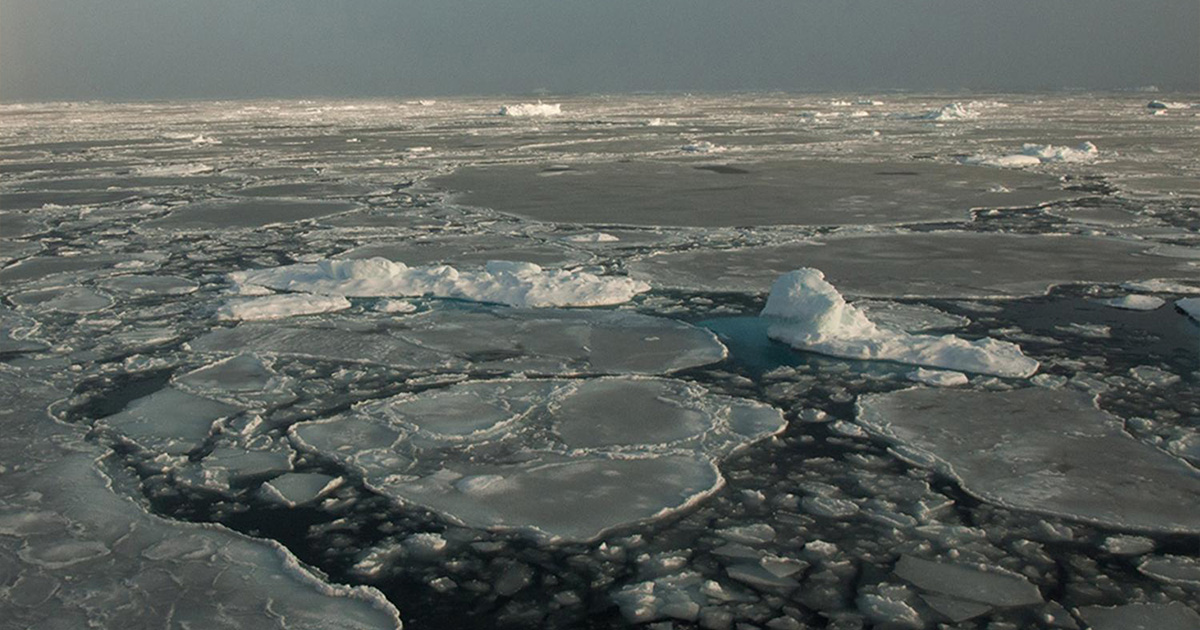The Arctic is rapidly losing sea ice, even during winter months when temperatures are below freezing and ice should be recovering from the summer melt.
A new study found powerful storms called atmospheric rivers are increasingly reaching the Arctic in winter, slowing sea ice recovery and accounting for a third of all winter sea ice decline, according to a team led by Penn State scientists.
"Arctic sea ice decline is among the most obvious evidence of global warming from the past several decades," said Pengfei Zhang, assistant research professor of meteorology and atmospheric science at Penn State and lead author of the study. "Despite temperatures in the Arctic being well below freezing, sea ice decline in winter is still very significant. And our research shows atmospheric rivers are one factor in understanding why."
Atmospheric rivers carry large amounts of water vapor in narrow, ribbon-like storm systems that can stretch for a thousand miles and produce extreme rainfall and flooding when they make landfall. These storms regularly impact midlatitude coastal regions like California, where atmospheric river events in January, for example, dropped 11 inches of rain.
Using satellite observations and climate model simulations, the scientists found these storms are increasingly reaching the Arctic—particularly the Barents and Kara seas off the northern coasts of Norway and Russia—during the winter ice-growing season. They reported their findings in the journal Nature Climate Change.
"We often think that Arctic sea ice decline is a gradual process due to gradual forcings like global warming," said L. Ruby Leung, Battelle Fellow at Pacific Northwest National Laboratory and a co-author. "This study is important in that it finds sea ice decline is due to episodic extreme weather events—atmospheric rivers, which have occurred more frequently in recent decades partly due to global warming."
Warm moisture carried by these storms increases downward longwave radiation, or heat emitted back to Earth from the atmosphere, and produces rain, both of which can melt the thin, fragile ice cover regrowing during the winter months.
Using satellite remote sensing images, the scientists observed sea ice retreat almost immediately following atmospheric river storms and saw the retreat persist for up to 10 days. Because of this melting and because the storms are becoming more common, atmospheric rivers are slowing down seasonal sea-ice recovery in the Arctic, the scientists said.
"When this kind of moisture transport happens in the Arctic, the effect is not only the amount of rain or snow that falls from it, but also the powerful melting effect on the ice," said Mingfang Ting, a professor at Lamont-Doherty Earth Observatory, Columbia University, and a co-author. "This is important since we are losing Arctic sea ice fast in the past few decades that, brought many unwanted consequences such as Arctic warming, erosion of Arctic coastlines, disturbance to global weather patterns and disruption to the Arctic communities and ecosystems."
The loss of Arctic sea ice has broad implications, the scientists said. Open waters may enable new, more direct shipping routes but also trigger geopolitical concerns between countries. Additionally, freshwater melting into the salty ocean may impact oceanic circulation patterns that stabilize global temperatures.
"Those factors make this study especially important from a science perspective, but also from social and security perspectives, said Laifang Li, assistant professor of meteorology and atmospheric science at Penn State and a co-author. "Sea ice melting has a big impact on the climate system and for society, and our study finds the Arctic is an open system and that climate change is way more complicated than temperature change alone can explain."
Using large-ensemble climate models, the scientists determined that human-induced warming has increased the rate of atmospheric river storms in the Arctic. But they also found that one major mode of natural climate variabilities—the so-called Interdecadal Pacific Oscillation—also contribute to atmospheric river changes.
"This study, together with other work that noted the presence of atmospheric rivers in the tropics, highlights that atmospheric rivers represent a global phenomenon," said Bin Guan, Earth systems scientist at the University of California, Los Angeles and Jet Propulsion Laboratory, California Institute of Technology. "Since they were discovered relatively recently—in the 1990s, and even more recently in terms of recognizing their societal impacts—atmospheric rivers provide an opportunity for potentially coordinated research and applications globally, that is, with today's computational and technological capabilities."
Also contributing to this research was Gang Chen, professor at the University of California, Los Angeles.
Researchers involved on this project received support from the National Science Foundation, NASA, and the Department of Energy.
Journal Reference:
- Pengfei Zhang, Gang Chen, Mingfang Ting, L. Ruby Leung, Bin Guan, Laifang Li. More frequent atmospheric rivers slow the seasonal recovery of Arctic sea ice. Nature Climate Change, 2023; DOI: 10.1038/s41558-023-01599-3



